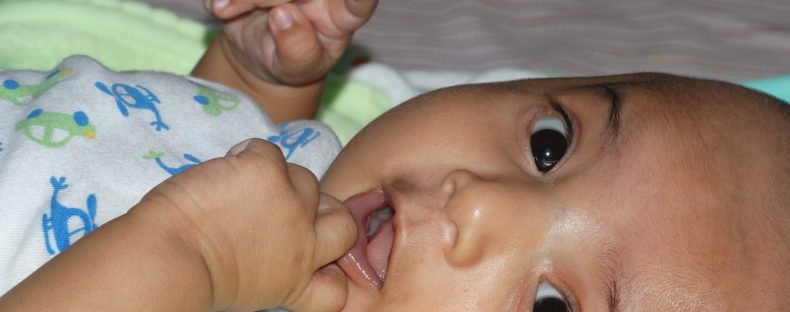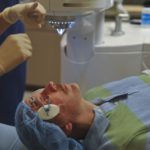
Paediatric Eye Care
Paediatric eye care is important
It has been estimated that children obtain about 80% of their information about the world through the sense of vision. For successful learning it is therefore essential that every child achieves the best vision of which he/she is capable. There is growing evidence of the detrimental impact on educational achievement in cases of uncorrected eye problems.The principal reason for providing eye check-ups for young children is to identify those whose visual development is not following normal patterns, those who require correction, or who have, or are at risk of, developing problems.
Comprehensive paediatric eye checks and treatment at Poona Eye Care
As part of a comprehensive paediatric eye checking at Poona Eye care, we assesses history and symptoms before going in for tests. We recommend check-up at birth and if all is normal, once a year thereafter. Children with developmental disability, those born prematurely and those with family history of strabismus, amblyopia and early spectacle wear are at increased risk of visual deficits and may need corrective actions. Any parental concerns regarding the child’s vision, ocular health or general development are also taken into account during our regular check-ups. We have the facility and expertise to treat all paediatric eye problems.
Drag ![]() left/right for full view
left/right for full view


|
Vision Before Treatment |
Vision After Treatment |
Frequently Asked Questions
Which of the paediatric eye problems can be congenital?
Almost all the paediatric eye problems can be present right from birth i.e. are congenital.
Therefore, more than precautions, the timely diagnosis and immediate treatment is very important to prevent further deterioration and vision loss.
What are the common paediatric eye problems?
Common paediatric eye problems are:
Amblyopia:
Amblyopia, also known as lazy eye, is reduced vision in an eye that results from misalignment of the eyes (strabismus), a need for glasses (refractive error), or disruption of light passing through the eye (e.g. pediatric cataract). If recognized early (preschool years), amblyopia generally responds well to treatment. If recognized later (after 9-10 years of age), amblyopia is much more difficult to treat and the child may have permanent vision loss. Signs and symptoms to watch for include misaligned eyes, squinting one eye, bumping into objects or other signs of poor depth perception, head tilting, and double vision. Amblyopia therapy includes glasses, patching, eye drops, and sometimes surgery.
Astigmatism:
Astigmatism is a condition in which objects at both distance and near appear blurred. This results from uneven curvature of the cornea and/or lens which prevents light rays entering the eye from focusing to a single point on the retina, thereby causing blur. Astigmatism often occurs with myopia (nearsightedness) or hyperopia (farsightedness).
Childhood Tearing:
Epiphora is the term for excessive tearing. Childhood epiphora is often noted soon after birth, but can be acquired later as well. When noted during infancy, it is usually due to blockage of the tear drainage system. This type of tearing often improves spontaneously by 6-12 months of age. Medical treatment includes tear sac massage and eye drops, but if tearing persists, surgical probing of the drainage system may be required. Other rare causes of childhood tearing include paediatric glaucoma and ocular surface disease.
Cortical Visual Impairment:
Cortical visual impairment (CVI) is vision loss due to any abnormality of the visual centre in the brain. The eyes are normal, but the visual interpretation centre in the brain does not function properly and prevents normal vision.
Developmental Abnormalities:
During development of the foetus, abnormalities in the visual system can occur. Some developmental abnormalities include coloboma, microphthalmia (small eye), and optic nerve hypoplasia. These abnormalities often result in vision loss.
Double Vision:
Double vision (diplopia) is typically caused by misalignment of the eyes (strabismus), which causes one to see an object in two different places at the same time. The object can be displaced in a horizontal, vertical, or diagonal fashion. Double vision can result from many conditions and should be evaluated at the time of onset. Treatment for double vision can include prism glasses, strabismus surgery, and Botox injection.
Genetic Eye Disease:
Many eye diseases have a known genetic abnormality. These diseases are often inherited and frequently there are other family members who have had the disease. In cases of known inherited eye disease in the family, early evaluation is important.
Hyperopia (farsightedness):
Hyperopia, or farsightedness, is a condition where a person can see distant objects more clearly than near objects. Typically the farsighted eye is smaller than normal. As a result, light rays do not focus properly on the retina at the back of the eye and causes blur. Hyperopia can be inherited. Infants and young children are typically somewhat farsighted, but this lessens as the eye grows. Some children can have higher amounts of hyperopia which can cause a constant blurry image in one or both eyes and prevent normal visual development (amblyopia). If not recognized early, this can result in permanent visual loss. Also, higher than normal amounts of hyperopia in children can cause inward crossing of the eyes (typically between 2 – 7 years of age) and treatment with eyeglasses can correct the eye misalignment (strabismus).
Myopia (nearsightedness):
Myopia, or nearsightedness, is a condition where a person can see near objects more clearly than distant objects. A myopic eye causes light from distant objects to be focused before they reach the retina and results in blurred vision for distant objects. Excessive myopia in children can result in lazy eye (amblyopia). Holding objects very close and squinting may indicate significant myopia.
Nystagmus:
Nystagmus is an involuntary, rhythmic oscillation of the eyes. The eye movements can be side-to-side, up and down, or rotary. Nystagmus may be present at birth or acquired later in life. It may result from abnormal binocular fixation early in life. It also may accompany a number of eye disorders and neurological disorders.
Paediatric Cataract:
A cataract is a cloudiness or opacification of the normally clear lens of the eye. Depending on the size and location, the cataract can interfere with light passing to the retina and cause blurred vision. Cataracts are typically associated with older adults, but cataracts can occur at birth or during childhood. Early detection and treatment of cataracts are critical in infants and young children in order to restore normal visual development. A white area in the pupil and misalignment of the eye can be a sign of cataract. Paediatric cataracts that significantly obstruct vision require surgery. Patients subsequently require treatment with eyeglasses, bifocals, or contact lenses, and eye-patching. Often, paediatric cataracts result in some degree of lazy eye (amblyopia).
Paediatric Glaucoma:
Glaucoma is a condition that is associated with high pressure within the eye. This pressure can damage the optic nerve, which is critical for vision, resulting in permanent vision loss. Paediatric glaucoma is a rare condition that can present in the newborn or during childhood. Signs and symptoms of paediatric glaucoma includes cloudy cornea, tearing, frequent blinking, light sensitivity, and redness of the eye.
Paediatric Ptosis (drooping eyelid):
Ptosis, or drooping of the upper eyelid, occurs in both children and adults. Children can be born with ptosis (congenital) or acquire it during childhood. It is caused by weakness in the muscle that elevates the eyelid. A droopy eyelid can block light passing to the retina in the back of the eye and/or create significant astigmatism that produces a blurry image in the affected eye. These situations cause lazy eye (amblyopia) and, if untreated, can result in permanent loss of vision. Also, children may develop a chin-up head position due to the droopy eyelid. If the ptosis is significant, surgical correction may be necessary.
Retinopathy of Prematurity (ROP):
Retinopathy of prematurity (ROP) is an eye disease that occurs in some premature infants. It results from abnormal development of the blood vessels in the retina. ROP is progessive, starting with mild changes and sometimes progressing to severe, sight threatening changes. Most infants with ROP improve spontaneously, but some develop severe changes that require treatment with a laser. Complications of ROP can include strabismus (eye misalignment), myopia (nearsightedness), cataract, and, in severe cases, blindness from retinal detachment. Premature infants at risk of ROP are identified in the hospital and enrolled in a routine screening protocol.
Strabismus:
Strabismus is the term for misalignment of the eyes. An eye may be turned inward (esotropia), outward (exotropia), upward (hypertropia), or downward (hypotropia). The misalignment may be constant or intermittent. Strabismus can occur in the newborn, during childhood, or in adulthood. Strabismus in children can result in lazy eye (amblyopia) and cause permanent loss of vision if treatment is delayed. Adults often experience double vision (diplopia). Depending on the type and cause of the strabismus, treatment may include eyeglasses, prisms, surgery, Botox injection, and eye-patching therapy.
Other treatments at Poona Eye Care
Please do write to us if you have any more queries on this. We will be glad to assist.
CONTACT US

- Shop No. 1, Lajawanti Apartments, 62/9 Erandawane, Opposite Sonal Hall, Karve Road, Pune-411004, Maharashtra, India.
- +91 735-027-7779
- info@poonaeyecare.com
Working Hours
- MON: 9:00 AM - 08:00 PM
- TUES: 9:00 AM - 08:00 PM
- WED: 9:00 AM - 08:00 PM
- THUR: 9:00 AM - 08:00 PM
- FRI: 9:00 AM - 08:00 PM
- SAT: 9:00 AM - 01:00 PM



